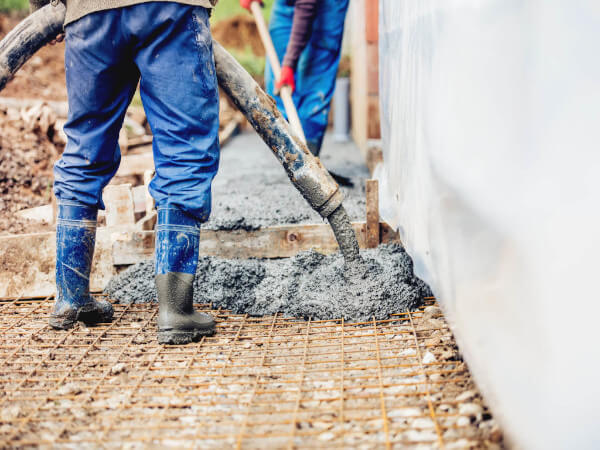
Concrete is an integral part of the modern world. It’s used to build everything from sidewalks and driveways to skyscrapers and dams, but many people are unaware of just how many options are available.
There are endless types of concrete, each with unique properties that make them ideal for certain applications. This article will introduce you to the most common types so you can decide which will best suit your needs.
1. Lightweight concrete
Lightweight concrete is made up of water, polystyrene particles, cement, and other additives. It’s lighter than regular concrete and is used for applications that require the least amount of weight possible, such as roofing and flooring.
Lightweight concrete also has better insulation properties and a lower density than regular concrete, making it ideal for use in climates where heating and cooling costs are a drain on the wallet. Proper installation is essential to ensure that lightweight concrete performs as expected. Be sure you choose a contractor with extensive experience using this type of concrete.
2. Reinforced concrete
Reinforced concrete is made with steel rebar or mesh that’s embedded in the wet concrete. It’s much stronger than regular concrete and can withstand greater loads without breaking.
Reinforced concrete is used for heavy-duty applications such as bridges, parking garages, and skyscrapers, and is common in both residential and commercial foundations and slabs. While it is more expensive than regular concrete, it’s also stronger and longer-lasting.
There are two types of reinforcement: steel rebar or a fiber mesh. While both offer strength benefits over standard concrete, steel offers slightly more strength, but fiber mesh is less expensive and easier to install.
3. Polished concrete
Polished concrete is a type of flooring that’s made from regular concrete. It can be used in both residential and commercial applications and is becoming increasingly popular due to its aesthetic appeal and durability.
This type of concrete offers a shiny and smooth surface that’s ideal for offices, stores, restaurants, healthcare facilities, schools, and more.
Concrete polishing is something that should only be done by professionals because improper installation can damage the surface of your polished flooring. If done incorrectly, polishing can also void the warranty on your flooring.
4. Mass concrete
Mass concrete is poured into ready-made molds. It’s a type of precast concrete made from regular or lightweight aggregate. It’s commonly used to create dams and large foundation slabs.
Mass concrete is similar to standard concrete with just one main difference: mass aggregates are larger than standard aggregates. This makes the concrete less dense, which can be a good or bad thing depending on your needs.
5. Prestressed concrete
Prestressed concrete is made with steel cables that are stretched prior to installation using hydraulic jacks, which creates tension on the beams as they set. This compression adds strength to the concrete and minimizes cracking but also makes it more expensive.
6. Precast concrete
Precast concrete is molded in a factory setting, which allows for more precise measurements and a higher level of quality control. Because it’s cured under controlled conditions, a stronger product is yielded that is less likely to crack. It’s also easier to install than standard concrete, helping you ensure quality and efficiency and avoid installation issues.
7. Ready mix concrete
Ready mix concrete is a type of concrete made in a plant and delivered to the job site in a ready-to-use form. It can be used in both residential and commercial applications, but it’s most commonly used for foundations, walls, and slabs.
At Port Aggregates, our concrete mixes are made using limestone instead of gravel, adding extra strength to your product. When you order from us, you can expect superior quality, lower costs, on-site quality control, prompt scheduling, fast turnaround, and more. Contact us today to request a quote
The post Your Guide to the Most Common Types of Concrete appeared first on Port Aggregates.